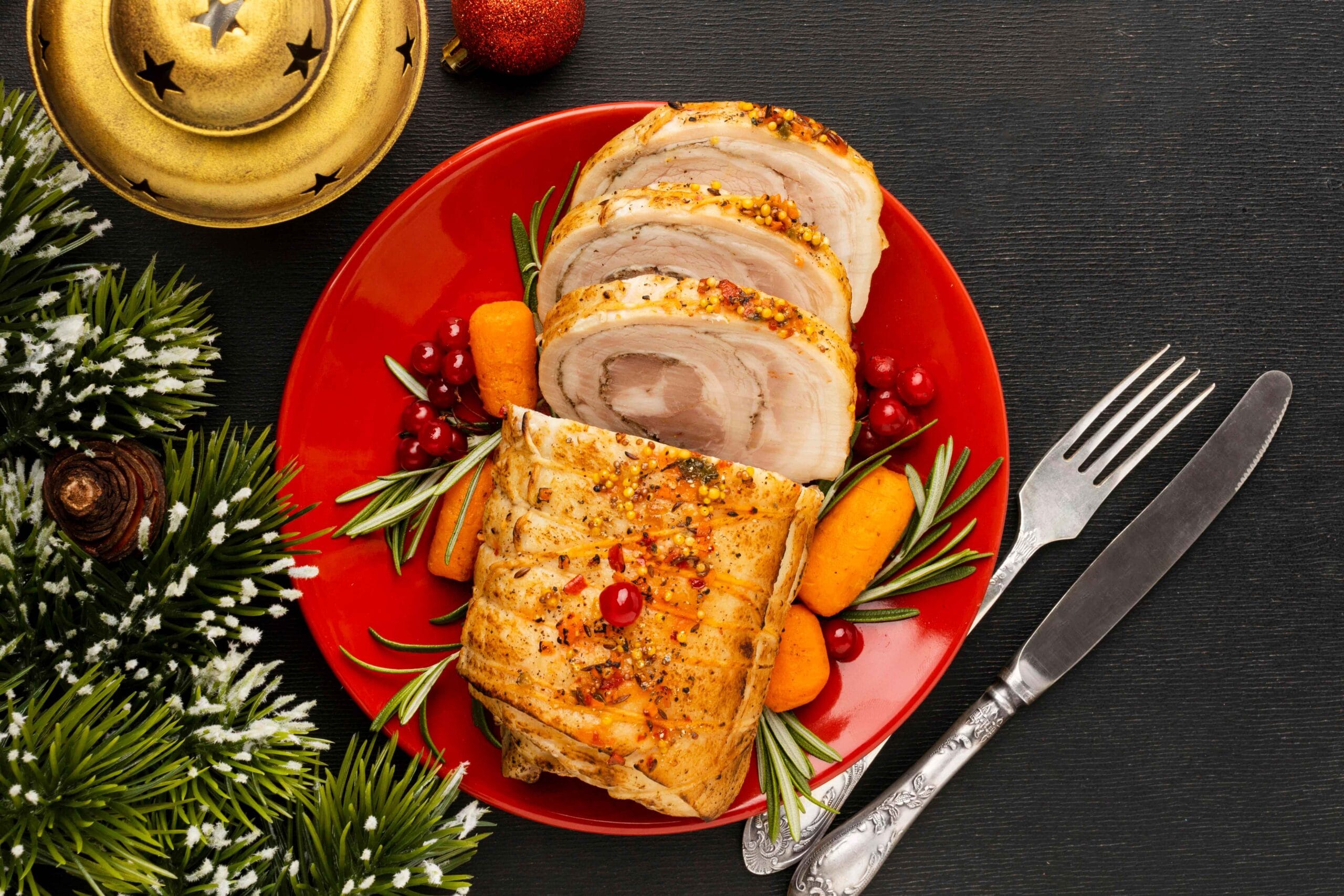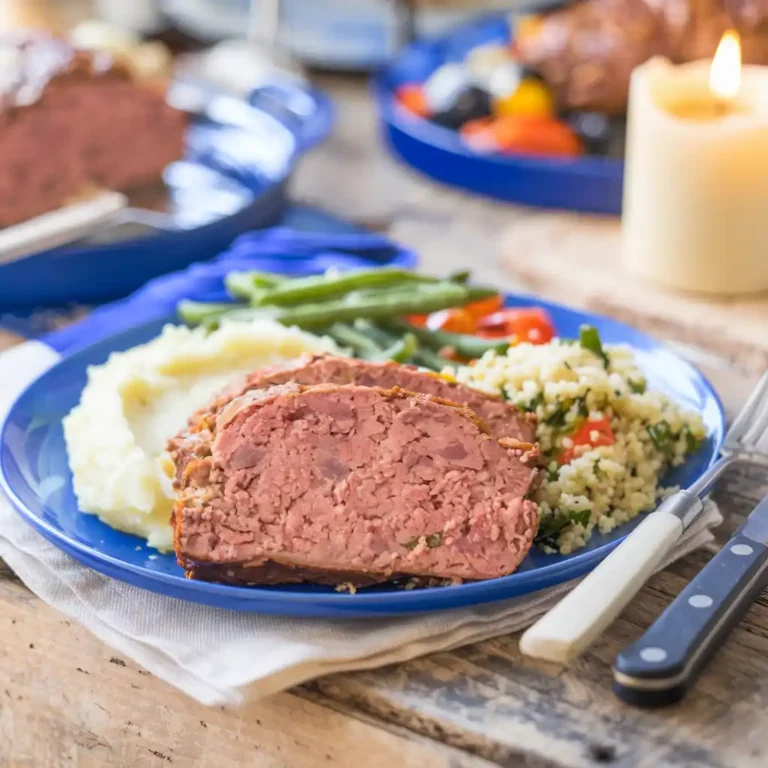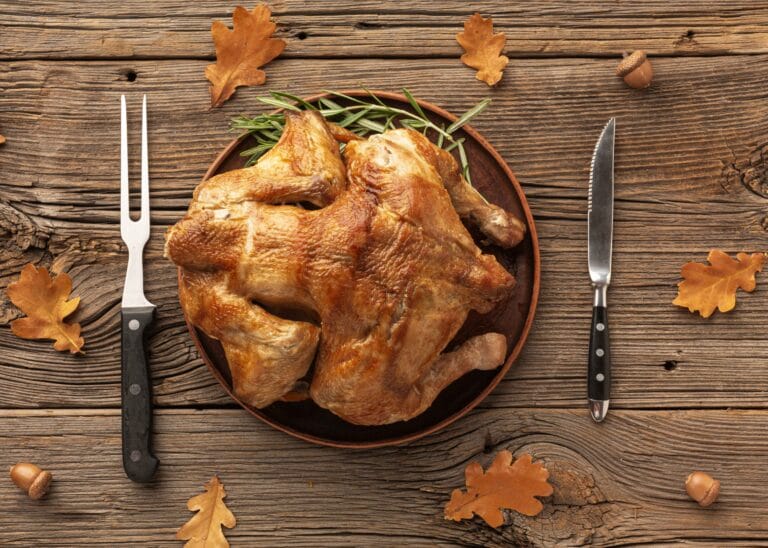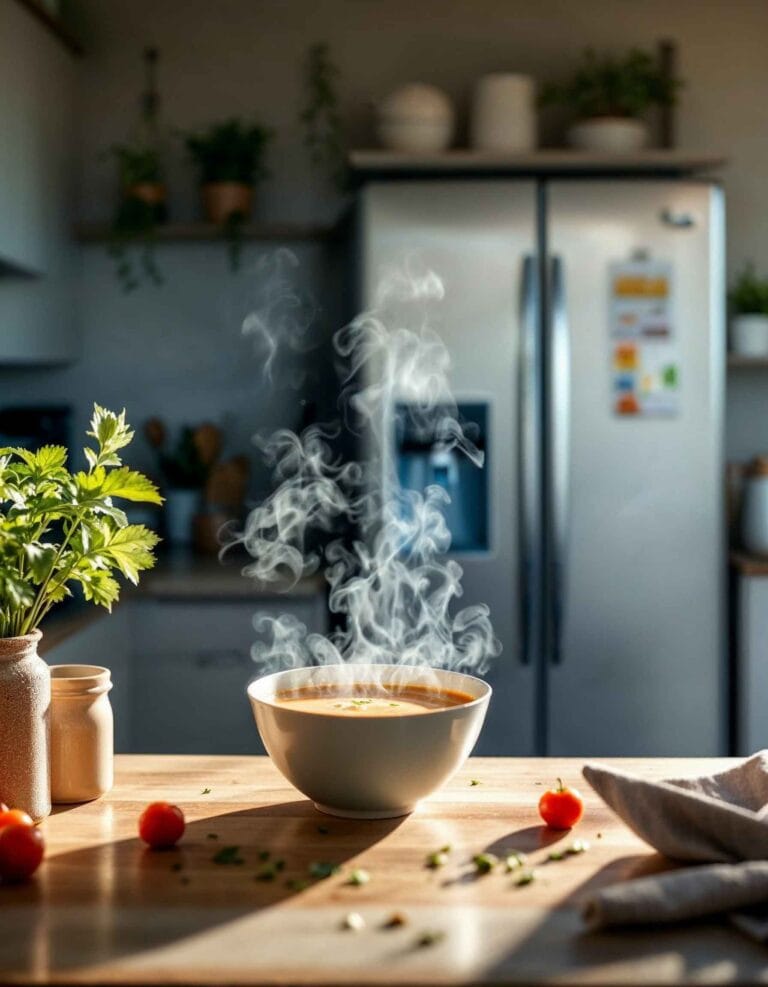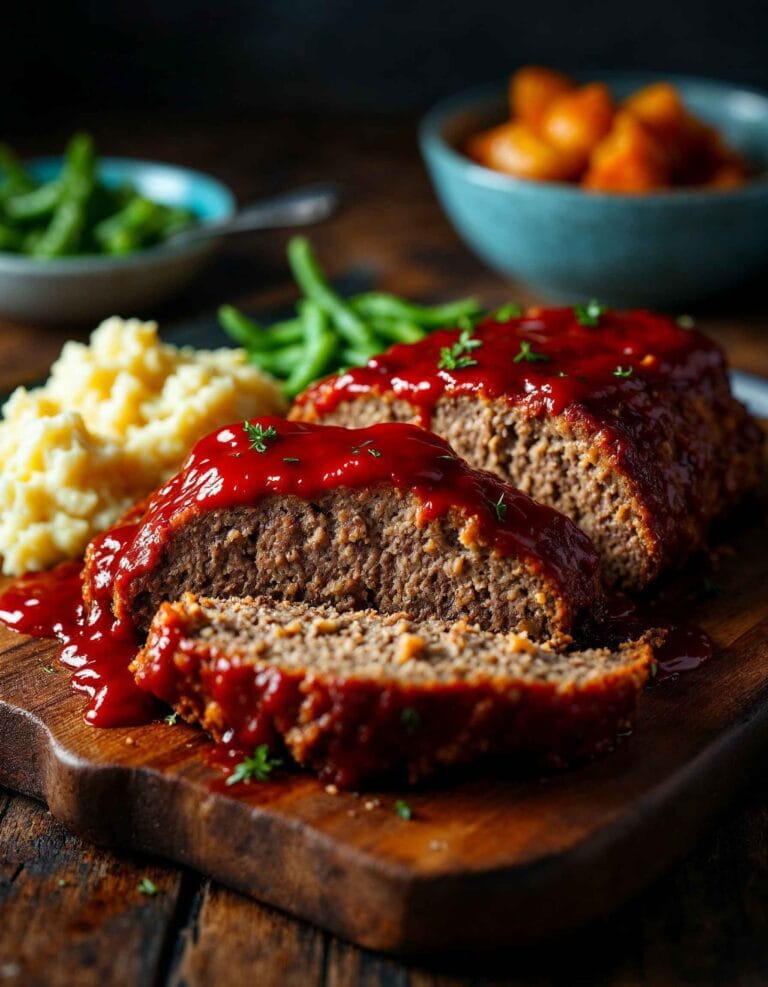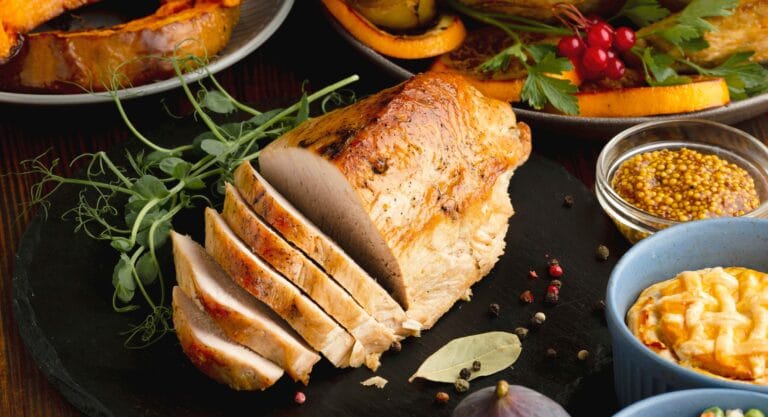How Long Does It Take to Smoke a Turkey Breast?
Smoking a turkey breast is a popular way to create a flavorful and tender centerpiece for any meal. However, understanding the time it takes to smoke a turkey breast is crucial for achieving the perfect results. Whether you’re hosting a holiday dinner or a weekend barbecue, the smoking process requires attention to detail and preparation.
This article will guide you through everything you need to know, from determining the smoking time based on the size and type of turkey breast to tips for achieving optimal flavor. By the end, you’ll be well-equipped to smoke a turkey breast to perfection, ensuring a delicious and satisfying dish every time.
Smoked Turkey Breast: The Ultimate Guide
Understanding the Basics of Smoking
What is Smoking?
Smoking is a low-and-slow cooking technique where food is cooked in the presence of wood smoke at a consistent low temperature, typically between 200°F and 275°F. Unlike grilling, which uses direct heat, smoking relies on indirect heat to cook the meat evenly while infusing it with rich, smoky aromas.
Key characteristics of smoking include:
- Low Temperature: Helps preserve moisture and prevents overcooking.
- Extended Cooking Time: Allows the meat to absorb the smoky flavor gradually.
- Wood Selection: Different types of wood (apple, hickory, cherry, etc.) contribute distinct flavors to the meat.
Benefits of Smoking Turkey Breast
Turkey breast is a naturally lean cut, making it an ideal candidate for smoking. The process helps to:
- Enhance Flavor: Smoking adds a depth of flavor that can’t be achieved with other cooking methods.
- Retain Juiciness: The low temperature and slow cooking help prevent the breast from drying out.
- Create a Crispy Skin: With proper preparation, the outer layer can develop a crispy, golden finish.
Smoked turkey breast is not only delicious but also versatile, pairing well with various side dishes and cuisines. It’s a crowd-pleaser for holidays, family gatherings, or even weeknight dinners.
Factors Influencing Smoking Times
When it comes to smoking a turkey breast, several factors determine how long the process will take. Understanding these variables ensures you achieve perfectly smoked meat every time.
Weight and Type of Turkey Breast
- Bone-In vs. Boneless:
- Bone-In Turkey Breast: Takes slightly longer to cook because the bone conducts and retains heat differently. It typically requires about 35–40 minutes per pound at 225°F.
- Boneless Turkey Breast: Cooks faster due to its more even thickness and lack of bone. It usually takes 30–35 minutes per pound at the same temperature.
- Size of the Breast:
- Smaller turkey breasts cook faster, while larger ones need more time to reach the desired internal temperature. A 4-pound breast will cook significantly quicker than an 8-pound breast, even at the same smoker settings.
Smoker Temperature
The cooking temperature you choose for your smoker plays a crucial role in the overall cooking time:
- At 225°F: The most common smoking temperature, providing a rich smoky flavor. Expect 30–40 minutes per pound.
- At 250°F: Speeds up the process slightly, taking around 25–30 minutes per pound without compromising too much on flavor.
- Higher Temperatures (e.g., 275°F): While faster, this may reduce the depth of smoky flavor and risk drying out the meat.
How to Keep Smoked Turkey Breast Juicy
Wood Choice and Smoke Intensity
- Wood Type:
- Applewood: Adds a sweet and mild smoky flavor, suitable for turkey.
- Hickory: Delivers a stronger, more robust flavor. Ideal for those who enjoy a pronounced smokiness.
- Cherry or Maple: Offers a subtle sweetness that pairs well with turkey breast.
- Smoke Duration: Continuous smoke throughout the cooking process enhances the flavor. However, too much smoke can make the meat taste bitter. Maintain a steady, moderate smoke flow for the best results.
Ambient Conditions
- Weather: Wind, humidity, and ambient temperature can affect smoking times. Colder weather may require longer cooking times or more frequent smoker adjustments.
- Smoker Efficiency: High-quality smokers maintain consistent temperatures better, leading to more predictable cooking times. In contrast, less efficient models may require constant monitoring and adjustments.
Internal Temperature Monitoring
Using a reliable meat thermometer to check the internal temperature of the turkey breast is the most accurate way to determine doneness. A turkey breast is ready to serve when the internal temperature reaches 165°F in the thickest part of the meat.
Is it Better to Smoke a Turkey at 225 or 250?
Step-by-Step Guide to Smoking a Turkey Breast
Smoking a turkey breast requires attention to detail and a step-by-step approach to ensure it’s flavorful, tender, and perfectly cooked. Here’s a comprehensive guide to help you through the process.
Preparing the Turkey Breast
- Thawing the Turkey Breast:
- If frozen, allow the turkey breast to thaw completely in the refrigerator. This can take 24–48 hours, depending on its size.
- Never thaw at room temperature, as this can lead to bacterial growth.
- Brining the Turkey:
- A brine enhances the flavor and moisture of the turkey breast.
- Basic Brine Recipe: Mix 1 gallon of water with 1 cup of kosher salt and 1 cup of sugar. Add herbs like rosemary, thyme, or garlic for extra flavor.
- Submerge the turkey breast in the brine for 8–12 hours, then rinse and pat it dry.
- Seasoning:
- Apply a generous layer of your favorite rub or seasoning. Include a mix of salt, pepper, paprika, garlic powder, and onion powder for a balanced flavor profile.
- Rub the seasoning under the skin for better flavor penetration.
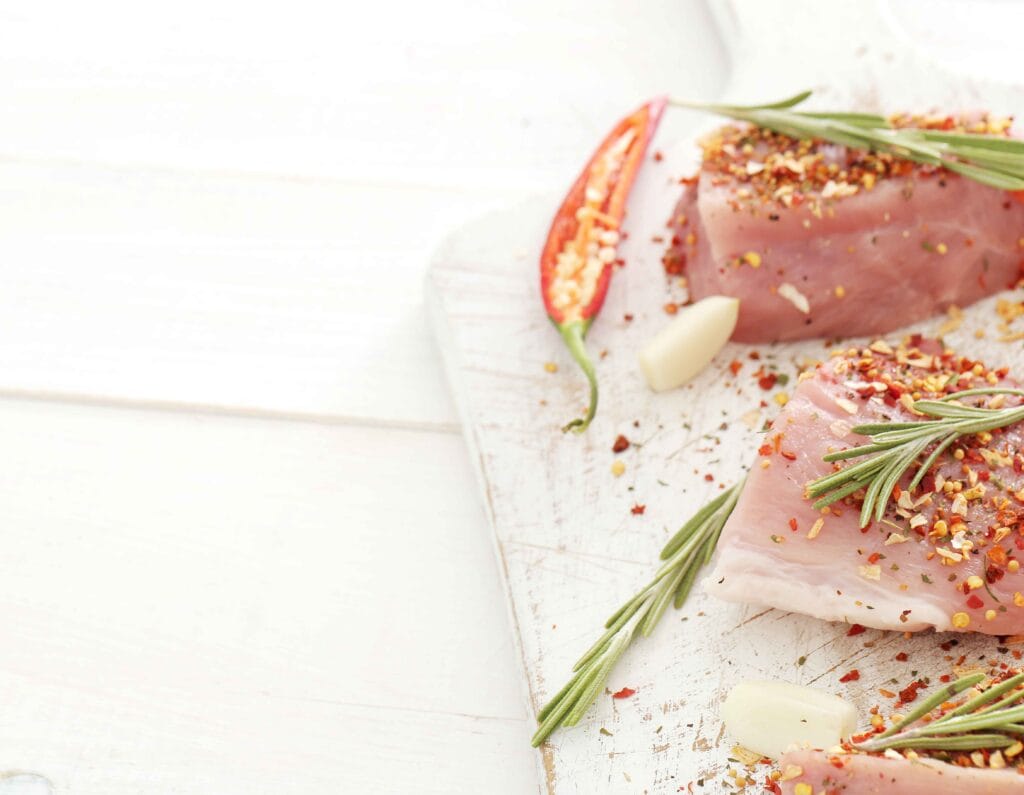
Choosing the Right Smoker Settings
- Preheating the Smoker:
- Set the smoker to a temperature of 225°F to 250°F. Allow it to preheat for at least 15–20 minutes.
- Adding Wood Chips:
- Select wood chips based on your flavor preference (e.g., apple, hickory, or cherry). Soak the chips in water for 30 minutes before adding them to the smoker to create steady smoke.
- Setting Up for Indirect Heat:
- Ensure the turkey breast is positioned away from direct heat to avoid overcooking and drying out the meat. Use a drip pan to catch juices and prevent flare-ups.
Smoking the Turkey Breast
- Placing the Turkey in the Smoker:
- Position the turkey breast with the skin side up on the smoker grates. This allows the fat to render and keep the meat moist.
- Maintaining Consistent Heat:
- Keep the smoker’s temperature steady throughout the process. Avoid frequent opening of the smoker lid to retain heat and smoke.
- Spritzing for Moisture:
- Every hour, spritz the turkey breast with a mixture of apple juice and water to prevent it from drying out and to enhance the flavor.
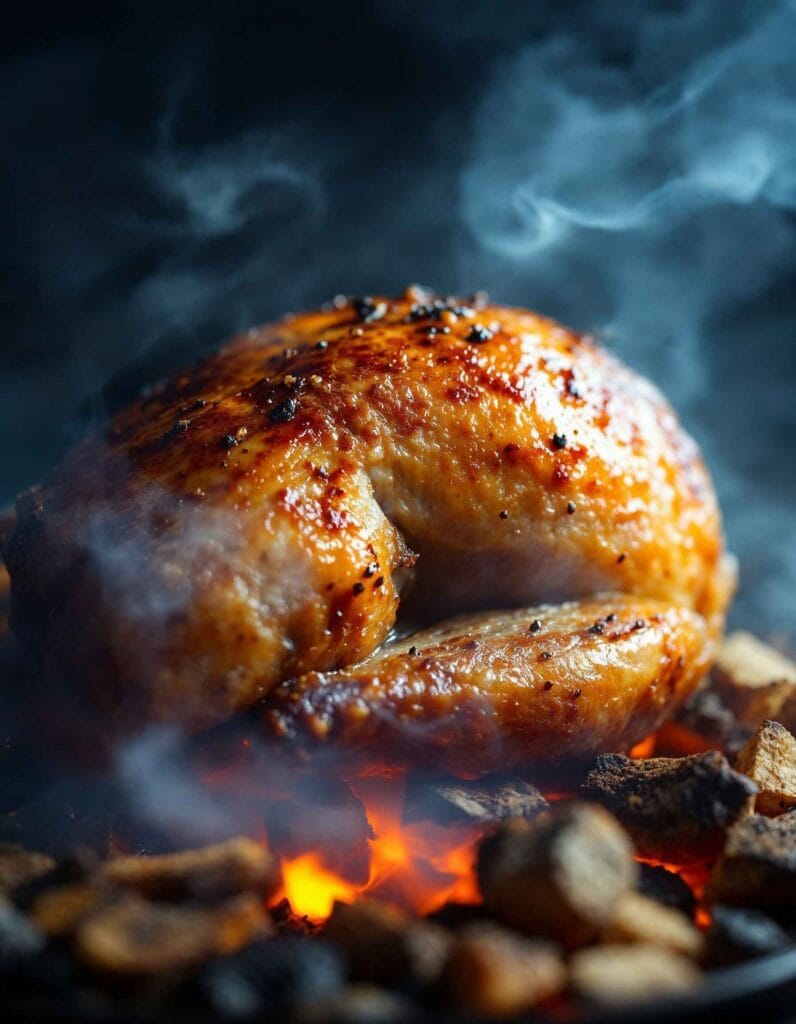
Monitoring the Internal Temperature
- Using a Meat Thermometer:
- Insert a meat thermometer into the thickest part of the turkey breast. Avoid touching the bone for an accurate reading.
- The goal is to reach an internal temperature of 165°F for perfectly cooked turkey.
- Optional Temperature Stalls:
- Around 145°F, you may notice a “stall” where the temperature seems to stop rising. This is normal. Be patient and avoid increasing the smoker’s heat.
Resting and Carving
- Resting the Meat:
- Once the internal temperature reaches 165°F, remove the turkey breast from the smoker and let it rest for 15–20 minutes. Resting allows the juices to redistribute, ensuring moist and flavorful meat.
- Carving Tips:
- Use a sharp carving knife to slice the turkey breast against the grain for tender and evenly cut pieces.
- Serve with your favorite sides and enjoy!
Estimated Smoking Times
Smoking times for a turkey breast depend on its size, whether it’s bone-in or boneless, and the temperature of your smoker. Here, we provide detailed guidelines to help you estimate how long it will take to achieve a perfectly smoked turkey breast.
General Smoking Time Per Pound
- Bone-In Turkey Breast:
- Requires about 35–40 minutes per pound at 225°F.
- Example: A 6-pound bone-in breast will take approximately 3.5 to 4 hours.
- Boneless Turkey Breast:
- Takes slightly less time, about 30–35 minutes per pound at 225°F.
- Example: A 4-pound boneless breast will take about 2 to 2.5 hours.
- Cooking at Higher Temperatures:
- At 250°F: Bone-in breast cooks in 30–35 minutes per pound, while boneless cooks in 25–30 minutes per pound.
- At 275°F: Bone-in breast cooks in 25–30 minutes per pound, and boneless in 20–25 minutes per pound.
How Temperature Affects Cooking Time
- Low and Slow (225°F):
- Best for maximum smoky flavor and juiciness.
- This method results in longer cooking times but produces tender meat with deep smoky notes.
- Moderate (250°F–275°F):
- Reduces cooking time slightly while still retaining good flavor.
- Ideal for those looking to balance flavor with time efficiency.
- High Heat (300°F and Above):
- Speeds up the process but may compromise the smoky flavor and risk drying out the meat.
Example Smoking Times for Common Sizes
| Turkey Breast Size | Bone-In (225°F) | Boneless (225°F) | Bone-In (250°F) | Boneless (250°F) |
|---|---|---|---|---|
| 4 lbs | 2.5–3 hours | 2–2.5 hours | 2–2.25 hours | 1.5–2 hours |
| 6 lbs | 3.5–4 hours | 3–3.5 hours | 2.75–3 hours | 2–2.5 hours |
| 8 lbs | 4.5–5.5 hours | 4–4.5 hours | 3.5–4 hours | 3–3.5 hours |
Using a Meat Thermometer for Accuracy
- Always prioritize internal temperature over estimated cooking times. A turkey breast is safe and fully cooked when the thickest part of the meat reaches an internal temperature of 165°F.
- Insert the thermometer into the thickest part of the breast without touching the bone for the most accurate reading.
Adjusting for Smoker Efficiency
- Efficient Smokers:
- High-quality smokers maintain consistent temperatures and heat circulation, resulting in more predictable cooking times.
- Inconsistent Smokers:
- Budget smokers or those used in windy or cold conditions may take longer. You may need to check and adjust the smoker frequently.
Accounting for Resting Time
Once the turkey breast is cooked, let it rest for 15–20 minutes before carving. This resting time does not count as part of the smoking duration but is essential for locking in juices and flavor.
How to Ensure Perfectly Smoked Turkey Breast
Smoking a turkey breast to perfection requires careful attention to detail and a few key techniques. From maintaining moisture to avoiding common pitfalls, these tips will help you achieve a flavorful, tender, and evenly smoked turkey breast every time.
Using a Meat Thermometer
- Importance of a Meat Thermometer:
- A meat thermometer is your most reliable tool to ensure the turkey breast is cooked safely and perfectly. Relying solely on time can result in undercooked or overcooked meat.
- Placement:
- Insert the thermometer into the thickest part of the breast, avoiding any contact with the bone. This ensures an accurate reading.
- Target Temperature:
- Remove the turkey breast from the smoker when it reaches an internal temperature of 165°F. The temperature will rise slightly during the resting period.
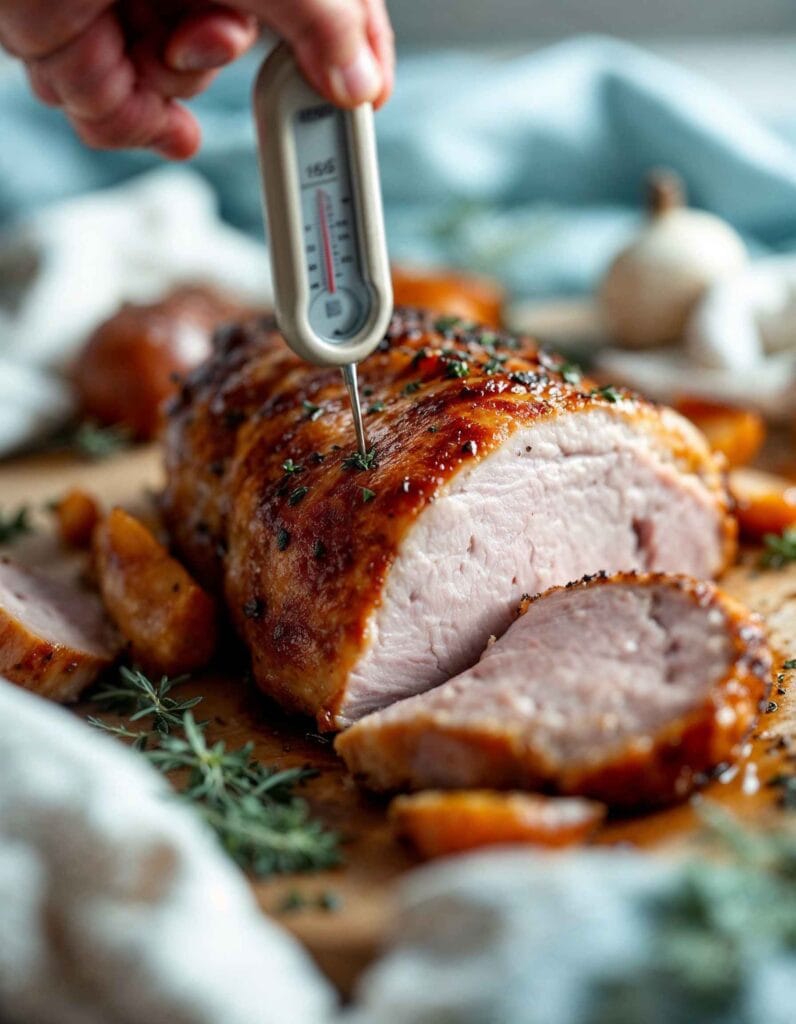
Brining for Moisture and Flavor
- Why Brine?
- Brining infuses the turkey with flavor while keeping the meat moist during the long smoking process.
- The salt in the brine helps the meat retain water, reducing the risk of drying out.
Should You Brine a Turkey Breast Before Smoking?
- Basic Brine Recipe:
- Mix 1 gallon of water with 1 cup of kosher salt and 1 cup of sugar.
- Add optional aromatics such as rosemary, thyme, garlic, or citrus slices for additional flavor.
- Brining Time:
- Submerge the turkey breast in the brine and refrigerate for 8–12 hours.
- Rinse thoroughly and pat dry before applying the seasoning.
Choosing the Right Seasoning
- Seasoning Options:
- A simple blend of salt, pepper, paprika, garlic powder, and onion powder creates a classic, savory flavor.
- For a sweeter profile, add brown sugar or maple syrup to your rub.
- Application Tips:
- Gently separate the skin from the meat and apply the seasoning underneath for better flavor penetration.
- Coat the exterior evenly, ensuring all sides are covered.
Maintaining Moisture During Smoking
- Use a Water Pan:
- Place a water pan in the smoker to maintain humidity and prevent the turkey from drying out.
- Spritzing:
- Prepare a spray bottle filled with a mixture of apple juice and water. Spritz the turkey breast every hour to add moisture and enhance flavor.
- Wrapping in Foil:
- If the turkey breast is browning too quickly but hasn’t reached 165°F internally, you can wrap it loosely in aluminum foil to protect it from excessive heat.
Avoiding Common Mistakes
- Skipping the Resting Period:
- Resting is crucial to allow the juices to redistribute throughout the meat. Skipping this step can result in dry turkey.
- Over-Smoking:
- Too much smoke can overpower the turkey’s natural flavor and create a bitter taste. Aim for a consistent, moderate smoke.
- Opening the Smoker Too Often:
- Opening the smoker frequently causes temperature fluctuations, leading to uneven cooking and longer smoking times.
Final Touches for Presentation and Flavor
- Crisping the Skin:
- For extra-crispy skin, raise the smoker temperature to 275°F for the last 30 minutes of cooking.
- Glazing (Optional):
- Brush the turkey breast with a glaze of melted butter, honey, or maple syrup during the last 15 minutes for added shine and sweetness.
Best Woods for Smoking Turkey Breast
The type of wood you choose for smoking plays a significant role in determining the flavor profile of your turkey breast. Different woods impart unique aromas and tastes, ranging from mild and sweet to bold and intense.
Popular Woods for Smoking Turkey
- Applewood:
- Flavor Profile: Sweet and mild, with a subtle fruity aroma.
- Best For: Enhancing the delicate flavor of turkey without overpowering it.
- Tip: Combine applewood with a stronger wood like hickory for a balanced flavor.
- Hickory:
- Flavor Profile: Strong, smoky, and slightly nutty.
- Best For: Adding a robust, traditional barbecue flavor.
- Tip: Use sparingly, as too much hickory can make the turkey taste bitter.
- Cherrywood:
- Flavor Profile: Mild and slightly sweet, with a hint of fruitiness.
- Best For: Creating a beautiful reddish hue on the turkey’s skin.
- Tip: Cherrywood pairs well with applewood or oak for a complex flavor.
- Maple:
- Flavor Profile: Sweet and subtle, with a rich, syrup-like undertone.
- Best For: Those who enjoy a sweeter smoked turkey flavor.
- Tip: Works wonderfully when paired with a brown sugar rub.
- Pecan:
- Flavor Profile: Rich and nutty, with a slightly sweet aroma.
- Best For: Achieving a delicate, buttery flavor.
- Tip: Ideal for smoking turkey if you want a subtle smokiness.
Combining Woods for a Unique Flavor
- Mixing wood types allows you to create custom flavor profiles. For example:
- Applewood + Hickory: Balances sweetness with boldness.
- Cherrywood + Oak: Offers mild smokiness with a hint of fruitiness.
- Pecan + Maple: Combines nutty and sweet flavors for a rich result.
How Wood Choice Affects the Turkey
- Mild Woods:
- Apple, cherry, and maple are considered mild woods, making them perfect for turkey breast, as they enhance flavor without overpowering.
- Strong Woods:
- Hickory and oak are stronger woods that add depth but should be used in moderation to avoid masking the turkey’s natural flavor.
Tips for Using Wood Chips or Chunks
- Soaking Wood Chips:
- Soak wood chips in water for 30 minutes before adding them to the smoker. This creates a steady flow of smoke and prevents quick burning.
- Using Wood Chunks:
- For longer smoking sessions, use larger wood chunks. They burn slower and provide consistent smoke.
- Adding Fresh Chips:
- Replenish wood chips or chunks every hour to maintain the smoke level, but avoid over-smoking the meat.
Serving Suggestions and Pairings
Once you’ve perfected your smoked turkey breast, the next step is to elevate your dining experience by pairing it with complementary sides, sauces, and beverages. Here’s a guide to serving your turkey breast in a way that enhances its smoky flavors and delights your guests.
Classic Side Dishes
- Mashed Potatoes:
- Creamy, buttery mashed potatoes provide a rich, comforting contrast to the smokiness of turkey breast.
- Tip: Add roasted garlic or smoked paprika to the potatoes for a subtle smoky connection.
- Roasted Vegetables:
- Carrots, Brussels sprouts, and sweet potatoes roasted with olive oil and herbs complement the turkey’s flavor.
- Tip: Toss the vegetables in a balsamic glaze before roasting for a tangy-sweet touch.
- Cornbread or Dinner Rolls:
- These soft, warm breads are perfect for soaking up turkey juices or accompanying a rich gravy.
- Tip: Add honey or jalapeños to cornbread for a sweet or spicy twist.
- Cranberry Sauce:
- The tart sweetness of cranberry sauce pairs beautifully with the savory notes of smoked turkey.
- Tip: Try a smoked cranberry sauce for a cohesive smoky theme.
Creative Side Options
- Smoked Mac and Cheese:
- A creamy, cheesy dish with a subtle smoky hint complements the turkey without overpowering it.
- Tip: Top with breadcrumbs and bake for a crispy texture.
- Quinoa Salad:
- A light, refreshing side dish with dried cranberries, nuts, and a citrus vinaigrette balances the richness of smoked turkey.
- Tip: Add grilled vegetables to tie in smoky flavors.
- Coleslaw:
- A tangy, crunchy coleslaw helps cut through the richness of the turkey breast.
- Tip: Use an apple cider vinegar-based dressing for a unique flavor.
Sauces and Gravies
- Traditional Turkey Gravy:
- Made from the drippings of the turkey, this classic sauce enhances the dish with depth and richness.
- Tip: Incorporate smoked turkey drippings for a stronger smoky flavor.
- Barbecue Sauce:
- A smoky or tangy barbecue sauce pairs wonderfully with smoked turkey, especially for casual meals.
- Tip: Choose a sauce with honey or molasses for a sweet complement.
- Herb Butter Sauce:
- A simple herb butter sauce made with melted butter, garlic, parsley, and lemon adds elegance to the dish.
- Tip: Drizzle over sliced turkey breast just before serving.
Beverages to Pair with Smoked Turkey Breast
- Wine Pairings:
- White Wine: A crisp Chardonnay or Sauvignon Blanc balances the smokiness and enhances the turkey’s flavor.
- Red Wine: A light Pinot Noir or Beaujolais works well without overwhelming the dish.
- Beer Pairings:
- Lager or Pilsner: A light and refreshing choice to counter the richness of the turkey.
- Amber Ale: Offers a slightly malty sweetness that pairs well with smoked flavors.
- Non-Alcoholic Options:
- Iced Tea: A subtly sweet or lemon-infused iced tea complements the smoky turkey.
- Sparkling Water: Serve with a splash of cranberry juice or citrus for a festive touch.
Presentation Tips
- Plating the Turkey:
- Slice the turkey breast against the grain for tender, even pieces. Arrange on a platter with fresh herbs like rosemary or thyme for decoration.
- Adding Garnishes:
- Use citrus slices, cranberries, or a drizzle of glaze as garnishes to add color and flavor to the plate.
- Serving Family-Style:
- Place the turkey breast and sides on a large serving table, allowing guests to mix and match as they like.
FAQs About Smoking Turkey Breast
How long does it take to smoke a turkey breast at 225?
Smoking a turkey breast at 225°F typically takes about 30–40 minutes per pound. For example:
- A 4-pound bone-in turkey breast will take approximately 2.5 to 3 hours.
- A boneless 5-pound turkey breast will take about 2.5 to 3 hours, while a bone-in version may take slightly longer.
Remember, the cooking time is an estimate. Always rely on an internal temperature reading of 165°F to determine doneness rather than time alone.
How do you keep a turkey breast from drying out in the smoker?
Keeping a turkey breast moist during smoking requires proper preparation and monitoring:
- Brining: Soak the turkey in a saltwater brine for 8–12 hours to retain moisture and enhance flavor.
- Spritzing: Use a mixture of apple juice and water to spritz the turkey breast every hour during the smoking process.
- Water Pan: Place a water pan in the smoker to maintain humidity and keep the meat moist.
- Temperature Control: Smoke at a consistent low temperature (225°F–250°F) to prevent overcooking.
- Resting: After smoking, let the turkey breast rest for 15–20 minutes. This allows the juices to redistribute within the meat.
Is it better to smoke a turkey at 225 or 250?
The choice between smoking at 225°F and 250°F depends on your priorities:
- At 225°F:
- Produces a deeper smoky flavor due to the longer cooking time.
- Ideal for those who prefer a more pronounced smoke profile.
- Cooking time: 30–40 minutes per pound.
- At 250°F:
- Reduces the cooking time slightly, making it more time-efficient.
- Maintains a good balance of smoky flavor and tender texture.
- Cooking time: 25–30 minutes per pound.
Both temperatures are excellent for smoking turkey breast, but 225°F is best for smoky enthusiasts, while 250°F works for those looking for a quicker option.
How long does it take to cook a 5 lb turkey breast?
The time it takes to cook a 5-pound turkey breast depends on the smoker temperature:
- At 225°F:
- Bone-In: Approximately 3 to 3.5 hours.
- Boneless: Around 2.5 to 3 hours.
- At 250°F:
- Bone-In: About 2.5 to 3 hours.
- Boneless: Roughly 2 to 2.5 hours.
Always confirm doneness by checking that the internal temperature has reached 165°F in the thickest part of the breast.
Conclusion
Smoking a turkey breast is a rewarding process that transforms a lean cut of meat into a flavorful and tender centerpiece for any meal. While the exact time it takes to smoke a turkey breast depends on factors like weight, smoker temperature, and whether it’s bone-in or boneless, the key to success lies in preparation and patience.
By brining the turkey, choosing the right wood, maintaining consistent smoker temperatures, and monitoring the internal temperature, you can achieve perfectly smoked turkey every time. Whether you prefer a slow, smoky cook at 225°F or a slightly quicker process at 250°F, the result is sure to be a deliciously juicy turkey breast with a beautifully smoky aroma.
Pair your smoked turkey breast with complementary sides, sauces, and beverages to elevate the meal, and don’t forget to rest the meat before serving for maximum flavor and tenderness. With these tips and techniques, you’ll be ready to impress your guests and enjoy the process of smoking turkey breast like a seasoned pitmaster.

